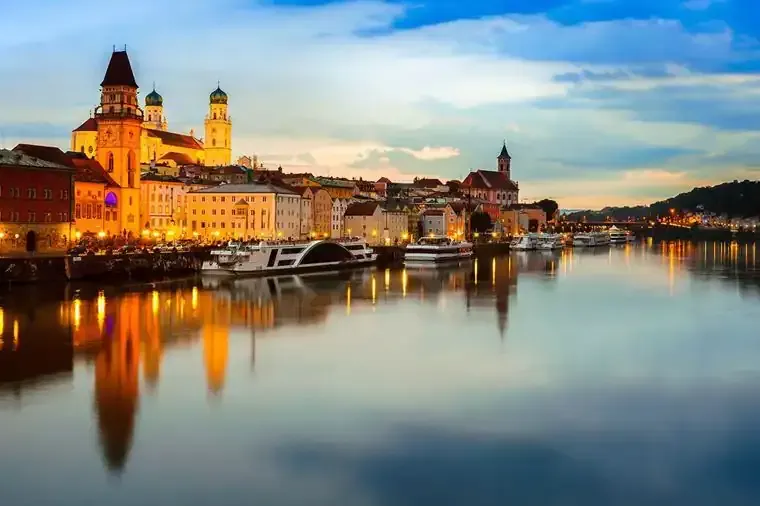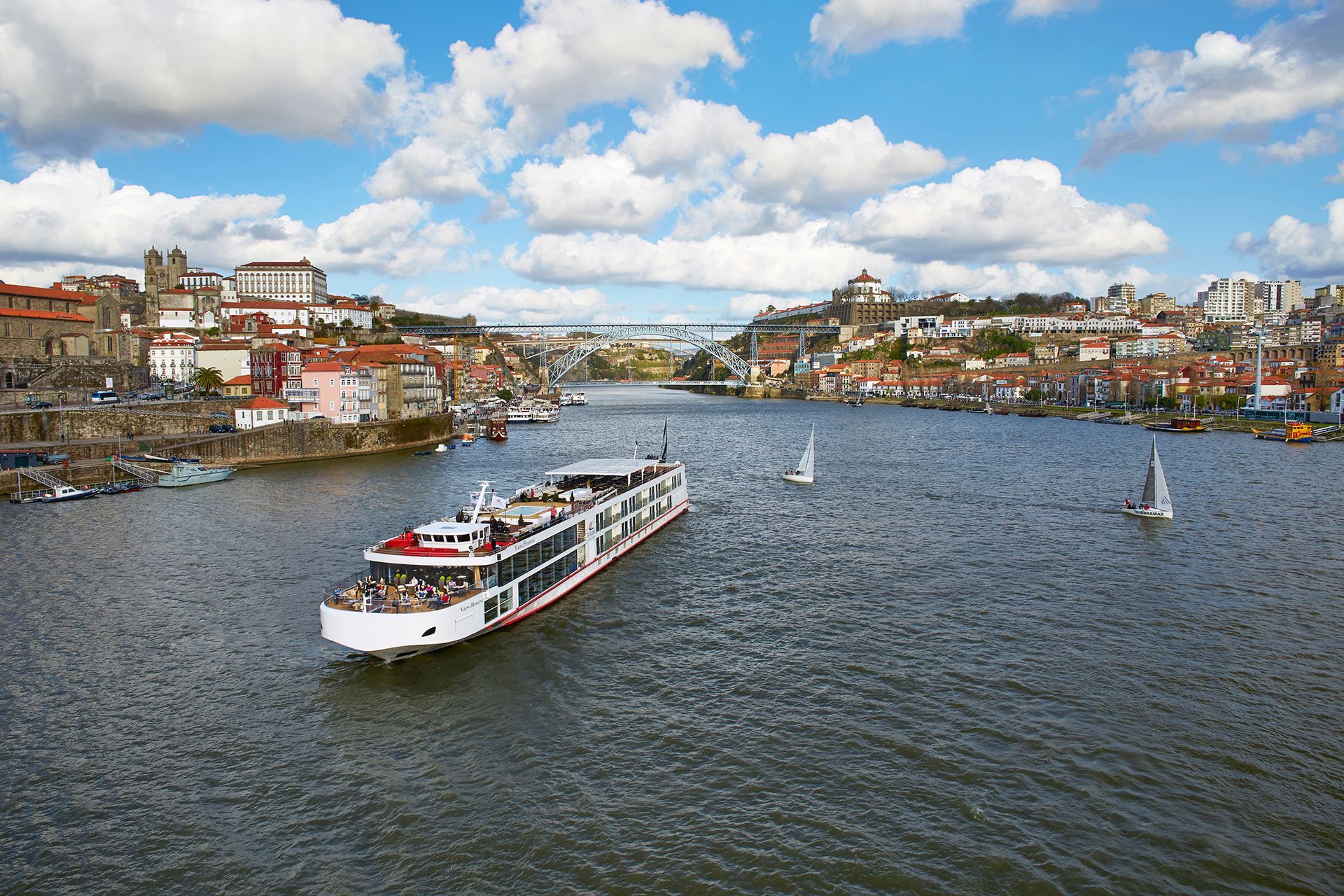At Allstop Travel, our team can turn your vacation dreams into reality. Whether you're seeking adventure, relaxation, or cultural immersion and genealogy, we curate experiences that resonate with your travel aspirations.
Blending customer service with a personal touch from well-travelled professionals with the power of world-class tools and insider connections.
Offering creative itineraries backed by deep industry know-how.
Highlighted Upcoming Tours and Destinations
The Passport Thread
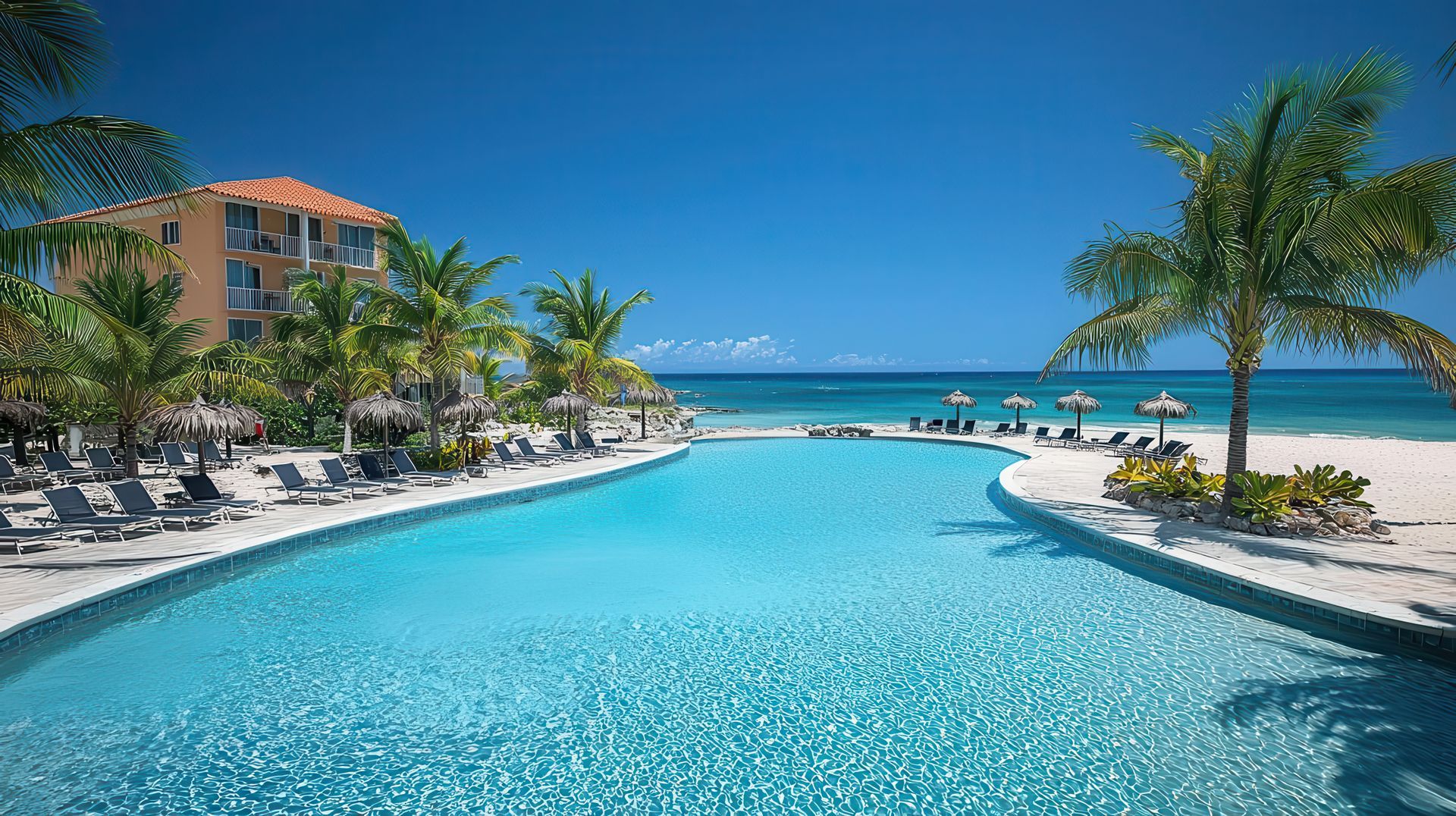
All-inclusive travel is versatile and cater to a wide range of travel types. Here are some of the most common types of travel where all-inclusive resorts are a popular choice: 1. Family Vacations Families often choose all-inclusive resorts for their convenience and amenities tailored to all ages. Resorts may offer kids' clubs, water parks, family suites, and activities for both children and adults. For example, Dreams Resorts and Beaches Resorts are known for their family-friendly offerings, including supervised kids' programs and family-oriented entertainment. 2. Romantic Getaways and Honeymoons Couples seeking a romantic escape often opt for adults-only all-inclusive resorts like Sandals or Secrets Resorts. These properties provide luxurious amenities, private accommodations, and romantic settings such as beachfront dinners or overwater bungalows. 3. Destination Weddings All-inclusive resorts are a top choice for destination weddings due to their comprehensive wedding packages, which often include ceremony setup, reception options, and group discounts. Resorts like Sandals, Dreams, and Hard Rock Hotels specialize in destination weddings and offer perks like free wedding packages with qualifying stays. 4 . Group Travel (Friends or Multi-Generational Trips) Groups of friends or multi-generational families enjoy all-inclusive resorts for their ability to cater to diverse interests. Resorts like Hyatt Ziva and Iberostar Selection offer activities for all ages, from water sports to evening entertainment, making them ideal for group travel. 5. Adventure Travel Some all-inclusive resorts, like Hotel Xcaret in Mexico, cater to adventure seekers by including access to eco-parks, zip-lining, snorkeling, and other outdoor activities. These resorts combine luxury with unique experiences, making them perfect for travelers who want more than just relaxation. 6. Corporate Retreats and Incentive Travel All-inclusive resorts are also popular for corporate events and incentive trips. They provide meeting spaces, group dining options, and team-building activities, all within a stress-free, pre-paid environment. Resorts like Hyatt Ziva Los Cabos and Sandals Ochi are known for accommodating corporate groups. 7. Budget-Conscious Travel Travelers looking for value often choose all-inclusive resorts because they bundle accommodations, meals, drinks, and activities into one price. Budget-friendly brands like Sunscape Resorts or Bahia Principe cater to this market while still offering a quality experience. 8. Wellness and Relaxation Wellness-focused travelers may choose boutique all-inclusive resorts like Zoëtry Wellness & Spa Resorts, which emphasize health, relaxation, and personalized service. These resorts often include spa treatments, yoga classes, and organic dining options. 9. Celebrations (Birthdays, Anniversaries, etc.) All-inclusive resorts are a great choice for milestone celebrations, offering group packages, private event spaces, and special perks for the guest of honor. Resorts like Hard Rock Hotels and Karisma properties are known for their ability to host memorable events. Each type of travel benefits from the convenience, variety, and value that all-inclusive resorts provide.

If you're dreaming of a summer getaway that mixes the thrill of outdoor adventures with a rich dose of history and culinary treats, then Salzburg and its neighboring gems, St. Gilgen and Lake Wolfgang, should be at the top of your list. Imagine exploring the iconic filming locations of "The Sound of Music," from the enchanting Mirabell Gardens to the charming gazebo, all while soaking up the vibrant cultural tapestry of Salzburg. Savor the thrill of a self-drive trip through the picturesque Austrian countryside, where each twist and turn offers breathtaking views and hidden treasures. You'll not only satisfy your wanderlust with hikes around Lake Wolfgang and rides on the historic Schafberg Bahn, but you'll also indulge your taste buds with a hands-on Apple Strudel class and a delectable Salzburger Nockerl at Edelweiss Cooking School. Ready for an unforgettable adventure that blends nature, history, and gastronomy? Let's guide you through the perfect itinerary for a three-day exploration of this stunning region. Exploring Salzburg's Cultural Gems: Salzburg is a treasure trove of cultural landmarks and historical sites, enchanting visitors with its rich history and architectural beauty. This section dives into some of the most iconic locations, especially those made famous by "The Sound of Music." Sound of Music Locations: The hills around Salzburg are alive with memories of "The Sound of Music." This beloved film left its mark on the city, drawing fans from all over the world. The movie's locations, such as the Leopoldskron Palace and the Nonnberg Abbey, serve as picturesque settings that highlight Salzburg's charm. Leopoldskron Palace: Featured as the family home in the movie, this palace is a stunning example of Rococo architecture. Visitors love to stroll around its serene lake, capturing the essence of scenes from the film. Nonnberg Abbey: Known for its rich history and as the site where Maria was a postulant, this abbey offers a glimpse into Salzburg's religious heritage. The gothic architecture and peaceful surroundings make it a must-visit. Whether you're a fan of the film or simply enjoy beautiful architecture and history, these locations provide a fascinating insight into Salzburg's cultural allure. Marabelle Gardens and Gazebo: Marabelle Gardens is a floral paradise nestled in the heart of Salzburg. This meticulously maintained garden is not only a botanical delight but is also famous for its appearance in "The Sound of Music." The gardens offer a serene escape from the bustling city. Enchanted Setting: The gardens are a vibrant tapestry of color, with a wide variety of plants and flowers. Visitors can wander along the paths, enjoying the symphony of scents and sights. Hellbrunn Palace: Famous Gazebo: Known for the romantic song "Sixteen Going on Seventeen," the gazebo is a delightful stop for fans of the film. The Palace has tours, lovely ponds with fish in them, playgrounds and plenty of room for children to run and explore. Simply stunning area to ride a bike in on a tour or self-drive as I did. This combination of horticulture and cinematic history makes Marabelle Gardens and Hellbrunn Palace a captivating destination for all who visit Salzburg. Culinary Adventures in Salzburg: Salzburg isn't just about history and landscapes; it's also a hub for culinary delights. From traditional Austrian dishes to hands-on cooking classes, this section explores the gastronomic wonders awaiting you in Salzburg. Apple Strudel Class: Ever wanted to make a traditional Austrian apple strudel? Salzburg offers the perfect opportunity to roll up your sleeves and try your hand at this classic dessert. The Apple Strudel class provides a step-by-step guide to creating this delicious treat. Preparation: Fresh apples, flour, sugar, and spices. - All ingredients are prepared just show up! Making the Dough: Learn the art of stretching the dough until it's paper-thin. This delicate process is crucial for achieving the perfect texture. This was super fun to watch. Done as a 4–5-person group effort. Don't worry if you're a single person there is always help. Filling and Baking: Fill the dough with a mixture of apples, raisins, cinnamon, and sugar before rolling it up and baking it to golden perfection. When I took this class, it was a full class, and it was amazing! Children are welcome. What better way to learn about a countries culture than through food? The instructors were friendly and very knowledgeable in selecting substitute ingredients that might not be available in other countries. Everything is clean, set-up and ready to go. This hands-on experience is not only educational but also a fun way to immerse yourself in Austrian culinary culture. Mastering Salzburger Nockerl Salzburger Nockerl is a signature dessert that represents the sweet side of Salzburg. Light, fluffy, and delicious, it’s a dish that every visitor should try at least once. Historical Background: This dessert dates back to the 17th century, with its airy texture symbolizing Salzburg's snow-capped mountains. It’s a delightful blend of eggs, sugar, and vanilla, baked to a dreamy consistency. Cooking Class Experience: Join a class at the Edelweiss Cooking School to master the art of creating this unique dish. Guided by expert chefs, you’ll learn the intricacies of achieving the perfect rise and flavor. Tasting Delight: Enjoy the fruits of your labor with a taste test and take home the recipe to recreate it for friends and family. This culinary venture not only satisfies your sweet tooth but also enriches your travel experience with a taste of local tradition. You can even choose to purchase a small cookbook as a souvenir and make some of the wonderful dishes of Austria for your friends and family. Scenic Escapes Around Lake Wolfgang: Beyond Salzburg's cultural heart, the scenic beauty of Lake Wolfgang and its surrounding areas offers a tranquil retreat. This section explores the natural wonders and leisure activities available in this picturesque region. When we arrived in Munich and rented the rental, I was so tired. I saw very little of the countryside as we drove out of the city on the famed Autobahn headed to the Austria village of St. Gilgen. I first saw the Alps on another visit to Germany. (That included Oktoberfest and Neuschwanstein Castle.) The Alps call to you much like the Rocky Mountains of the United States. Like a long-lost friend waiting to take you on an adventure. When we arrived in the area of Lake Wolfgang see, it was simply stunning. Beautiful blue green water and breathtaking mountains all around. St. Gilgen Ferry and Schafberg Bahn: St. Gilgen Ferry is a delightful way to explore Lake Wolfgang. The ferry ride provides breathtaking views and connects you to charming lakeside villages. Peaceful Cruise: The ferry offers a relaxing journey across the lake, allowing you to soak in the vibrant scenery and tranquil waters. -Restrooms and simple drink services are provided. The boats are very clean and comfortable seating. Cultural Stops: Disembark at various stops to explore local attractions, such as traditional Austrian villages and historical sites. The Schafberg Bahn This train is an iconic cog railway that takes you to the summit of the Schafberg Mountain. This thrilling ride offers panoramic views of the surrounding landscape. Mostly NOT recommended for people who are accessibly challenged. The trains are small; there is quite a large step to access the train car. At the top while you can enjoy the view, there is a lot of steep climbing to get to the restaurants and other things to see. Breathtaking Views: As the train ascends, you'll be treated to stunning vistas of the lake and Alps. It's a photographer’s paradise. Summit Experience: At the top, enjoy hiking trails and a cozy mountain hut where you can relax with a refreshing drink. This combination of ferry and railway adventures provides a memorable way to experience Lake Wolfgang's natural allure. Lake Wolfgang Hiking Trails: Lake Wolfgang is not just about relaxation; it's an adventurer's haven with its extensive network of hiking trails. These paths offer varying levels of difficulty, catering to both seasoned hikers and casual walkers. Popular Trails: Riedlweg Loop: A gentle path that winds through lush forests and offers stunning views of the lake. Perfect for a leisurely stroll. Falkenstein Ridge: For a more challenging trek, this trail offers steep climbs and rewarding vistas from the top. It's ideal for those seeking a bit of exertion. Schafberg Summit Trail: Adventurers can hike up to the Schafberg summit, enjoying panoramic views that stretch across the lakes and mountains. With trails to suit every preference, Lake Wolfgang is a hiker's dream, providing opportunities to explore the serene beauty of the Austrian countryside.

As the Midwest begins to thaw into summer, it's easy to forget the long, frosty months that lie ahead. But for those who’ve weathered a few winters, the idea of a warm, sun-soaked escape becomes more than a daydream — it becomes a necessity. Now is the perfect time to imagine yourself on a beach, drink in hand, soaking up the sun while snow falls quietly back home. Why wait until the cold sets in to plan your getaway? Let this be the year you trade icy roads for ocean breezes — and have your winter escape ready before the first frost arrives. 🌴 U.S. Destinations (No Passport Required) 1. Phoenix / Scottsdale, Arizona Weather: 65–75°F in winter Why Go: Desert scenery, golf, spa resorts, hiking (Camelback Mountain), MLB Spring Training. Ease: Direct flights from Bismarck or Fargo on Allegiant or Delta (seasonal). 2. Las Vegas, Nevada--Codi is a destination Specialist Weather: 60–70°F in winter Why Go: Shows, casinos, Red Rock Canyon hikes, good winter deals. Ease: Direct flights from Bismarck (Allegiant), usually under 3 hours. 3. San Diego, California--Misty is a native of San Diego-Destination Specialist Weather: 65–75°F, sunny and coastal Why Go: Beaches, zoo, food, harbor cruises, laid-back vibe. Ease: 1-stop flights from Bismarck or Fargo via Denver or Minneapolis. 4. Orlando, Florida- - Misty is a Destination Specialist for this area Weather: 70–80°F Why Go: Theme parks (Disney, Universal), warm pools, golf. Ease: 1-stop flights from Bismarck/Fargo. 🏝️ Mexico & Caribbean (Passport Needed) 5. Cancún / Riviera Maya, Mexico-- Misty is a Destination specialist for this area Weather: 80–85°F, perfect beach weather Why Go: All-inclusive resorts, beaches, Mayan ruins, cenotes. Ease: Charter flights from Bismarck (usually in Jan–March), or 1-stop via MSP or DEN. 6. Puerto Vallarta, Mexico Weather: 75–85°F Why Go: Pacific coast beaches, old-town charm, whale watching. Ease: Charter or 1-stop via Denver or Minneapolis. 7 . Punta Cana, Dominican Republic Weather: 80–85°F Why Go: All-inclusive resorts, white sand beaches. Ease: 1-stop flights via Minneapolis or Chicago (winter charters available).

Top Destinations You Can Travel to from the U.S. Without a Passport Traveling internationally often requires a passport, but did you know there are several incredible destinations you can visit without one? Whether you're looking for tropical beaches, rich cultural experiences, or stunning landscapes, U.S. citizens can explore a variety of locations without the need for a passport. These destinations are either U.S. territories or places where alternative forms of identification, such as a government-issued ID, are sufficient. Let’s dive into the top destinations you can travel to from the U.S. without a passport. 1. Puerto Rico Puerto Rico is a Caribbean gem that offers a mix of vibrant culture, historical landmarks, and breathtaking beaches. As a U.S. territory, you can travel to Puerto Rico with just a government-issued ID. Explore Old San Juan’s cobblestone streets and colorful colonial architecture, visit the El Yunque National Forest for lush hiking trails, or relax on the pristine beaches of Isla Verde. Puerto Rico also offers unique experiences like bioluminescent bay tours in Vieques and delicious local cuisine, including mofongo and fresh seafood. 2. U.S. Virgin Islands The U.S. Virgin Islands—St. Thomas, St. John, and St. Croix—are another tropical paradise accessible without a passport. Known for their crystal-clear waters and white sandy beaches, these islands are perfect for snorkeling, diving, and other water activities. St. Thomas is famous for its shopping and vibrant nightlife, while St. John offers tranquil beaches and the Virgin Islands National Park. St. Croix combines history and culture with attractions like the Cruzan Rum Distillery and the historic town of Christiansted. 3. Hawaii Although Hawaii is part of the United States, its unique Polynesian culture and stunning landscapes make it feel like an exotic getaway. From the lush rainforests of Maui to the volcanic landscapes of the Big Island, Hawaii offers diverse experiences for every type of traveler. Enjoy surfing on Waikiki Beach, hiking the Na Pali Coast in Kauai, or exploring the active volcanoes at Hawaii Volcanoes National Park. No passport is needed to enjoy this tropical paradise. 4 . Alaska For those seeking adventure and natural beauty, Alaska is an excellent choice. Known as "The Last Frontier," Alaska offers breathtaking landscapes, including glaciers, mountains, and wildlife. Cruise through Glacier Bay, explore Denali National Park, or take a scenic train ride on the Alaska Railroad. While Alaska is part of the continental U.S., its remote location and unique environment make it a bucket-list destination for many travelers. 5. Guam Located in the Pacific Ocean, Guam is a U.S. territory that combines rich history with stunning beaches. Visitors can explore World War II historical sites, enjoy water sports like snorkeling and diving, or relax on Tumon Bay’s sandy shores. Guam’s Chamorro culture adds a unique flavor to the island, with traditional dances, local cuisine, and cultural festivals. A government-issued ID is all you need to experience this tropical destination. 6. American Samoa American Samoa is another U.S. territory in the South Pacific that offers a blend of natural beauty and cultural heritage. Known for its rugged landscapes, coral reefs, and traditional Samoan culture, this destination is perfect for travelers looking to escape the hustle and bustle. Visit the National Park of American Samoa for hiking and wildlife spotting, or immerse yourself in the local culture through traditional ceremonies and cuisine. 7. Northern Mariana Islands The Northern Mariana Islands, including Saipan, Tinian, and Rota, are a U.S. territory in the Pacific Ocean. These islands are known for their stunning beaches, historical sites, and outdoor activities. Saipan offers world-class diving spots, while Tinian is famous for its historical significance during World War II. Rota provides a quieter, more laid-back experience with beautiful beaches and hiking trails. 8. Key West, Florida While technically part of the continental U.S., Key West feels like a tropical escape. Located at the southernmost tip of Florida, this island city is known for its laid-back vibe, colorful architecture, and vibrant nightlife. Explore the Ernest Hemingway Home and Museum, enjoy water activities like snorkeling and kayaking, or simply relax on the beach. Key West is easily accessible by car, plane, or ferry, making it a convenient option for a passport-free getaway. 9. Cruise to the Caribbean If you’re looking for a passport-free international experience, consider a closed-loop cruise departing from a U.S. port. These cruises visit destinations in the Caribbean, such as the Bahamas, Jamaica, and the Cayman Islands, and allow U.S. citizens to travel with just a government-issued ID and a birth certificate. While a passport is not required for these cruises, it’s always recommended to carry one in case of emergencies, such as needing to fly back to the U.S.. 10. Canada and Mexico (Limited Circumstances) While a passport is generally required for air travel to Canada and Mexico, U.S. citizens can enter these countries by land or sea with alternative documentation, such as a passport card or an enhanced driver’s license. These options are ideal for road trips or cruises to nearby destinations. However, it’s important to check the specific entry requirements for your destination before traveling. Travel Tips for Passport-Free Destinations - Always carry a government-issued ID, such as a driver’s license, when traveling to these destinations. - Check the specific entry requirements for your destination, as some may have additional documentation needs. - Consider travel insurance to cover unexpected situations, such as medical emergencies or trip cancellations. - If traveling on a cruise, ensure you understand the cruise line’s policies regarding identification and reentry to the U.S.. Conclusion Traveling without a passport doesn’t mean you have to miss out on incredible experiences. From tropical islands to rugged landscapes, these destinations offer a variety of adventures for U.S. citizens. Whether you’re looking for relaxation, cultural immersion, or outdoor exploration, there’s a passport-free destination waiting for you. Start planning your next trip today and enjoy the convenience of traveling without the need for a passport.

All-inclusive resorts offer a unique way to experience travel by bundling accommodations, meals, and activities into one convenient package. Whether you're a seasoned traveler or new to vacation planning, understanding the benefits of these resorts can help you make an informed decision for your next getaway. Seamless Vacation Experience A seamless vacation experience is what all-inclusive resorts promise. From the moment you arrive, everything is designed to ensure you can relax without the usual travel stress. No need to fret about reservations or unexpected expenses—everything is taken care of. Imagine waking up to a breakfast buffet spread with international flavors, followed by a day of exploring or lounging by the pool. These resorts remove the burden of planning, allowing you to focus on creating memories with family or friends. For those traveling with kids, all-inclusive resorts often provide childcare services and kid-friendly activities. This means parents can enjoy some downtime while knowing their children are safe and entertained. In summary, choosing an all-inclusive resort means choosing convenience, relaxation, and a vacation where every detail is considered. It's an ideal choice for those who want to explore new places without the hassle of planning every detail. A ctivities and Amenities Galore Activities and amenities are abundant at all-inclusive resorts, providing endless entertainment options for guests of all ages. These resorts often feature a variety of water sports, such as snorkeling, kayaking, and sailing, allowing you to explore the natural beauty of your destination. For those who prefer to stay on land, there are plenty of options, from tennis courts and fitness centers to golf courses and hiking trails. Many resorts also offer cultural activities, like cooking classes or dance lessons, to immerse you in the local culture. In addition to activities, the amenities at these resorts ensure a comfortable stay. Expect luxurious spa treatments, elegant dining options, and well-appointed accommodations that cater to all your needs. For families, amenities such as kids' clubs and family-friendly entertainment ensure that everyone enjoys their stay. There's something for everyone, making it easy to please travelers of all ages and interests. Embracing Relaxation and Safety An essential part of the all-inclusive resort experience is embracing relaxation and ensuring safety. These resorts prioritize your well-being by offering secure environments and attentive staff ready to assist you at any time. For those seeking relaxation, indulge in spa treatments that rejuvenate your body and mind. Yoga and meditation sessions are often available to help you unwind in tranquil settings. Safety is paramount, with many resorts implementing stringent health protocols and security measures. Guests can enjoy their vacation knowing that their well-being is a top priority. In conclusion, all-inclusive resorts provide a haven of relaxation and safety, ensuring your vacation is both enjoyable and stress-free. Whether you're lounging by the pool or exploring new activities, you can do so with peace of mind.

Going to an all-inclusive resort in Jamaica during the winter is a popular escape for many Mid-Westerners, (I live in North Dakota) and here’s why it makes especially good sense: ☀️ 1 . Escape Harsh Winter Weather Our winters are long, bitterly cold, and snowy. Jamaica offers sunshine, 80°F temperatures, and ocean breezes, a complete mental and physical reset from cabin fever. 🏝️ 2. All-Inclusive = No-Stress Vacation All meals, drinks, entertainment, and many activities are included. You can fully relax without constantly budgeting or planning logistics—perfect for those who just want to unwind. ✈️ 3 . Easy Travel Logistics Many North Dakotans fly from Fargo, Bismarck, or even Minneapolis, with charter flights or vacation packages available in peak winter months. Larger midwestern cities offer good connections as well. Resorts often include airport transfers and concierge services for a seamless trip. 👫 4 . Great for Couples, Families, and Groups Whether you're planning a romantic getaway, girls' trip, or family vacation, Jamaica has options: adults-only luxury, kid-friendly fun, or lively group resorts. 🎶 5. Culture + Relaxation Beyond the beach, Jamaica offers vibrant culture, music (reggae!), and excursions like Dunn’s River Falls, Blue Hole, or local jerk chicken stands. All-inclusive resorts often feature live entertainment and themed nights, offering a taste of local culture in comfort. 💰 6. Great Value in Winter While its peak season, many packages offer good value considering the food, drinks, lodging, and activities are bundled. Booking early or through a travel advisor can secure deals or upgrades.
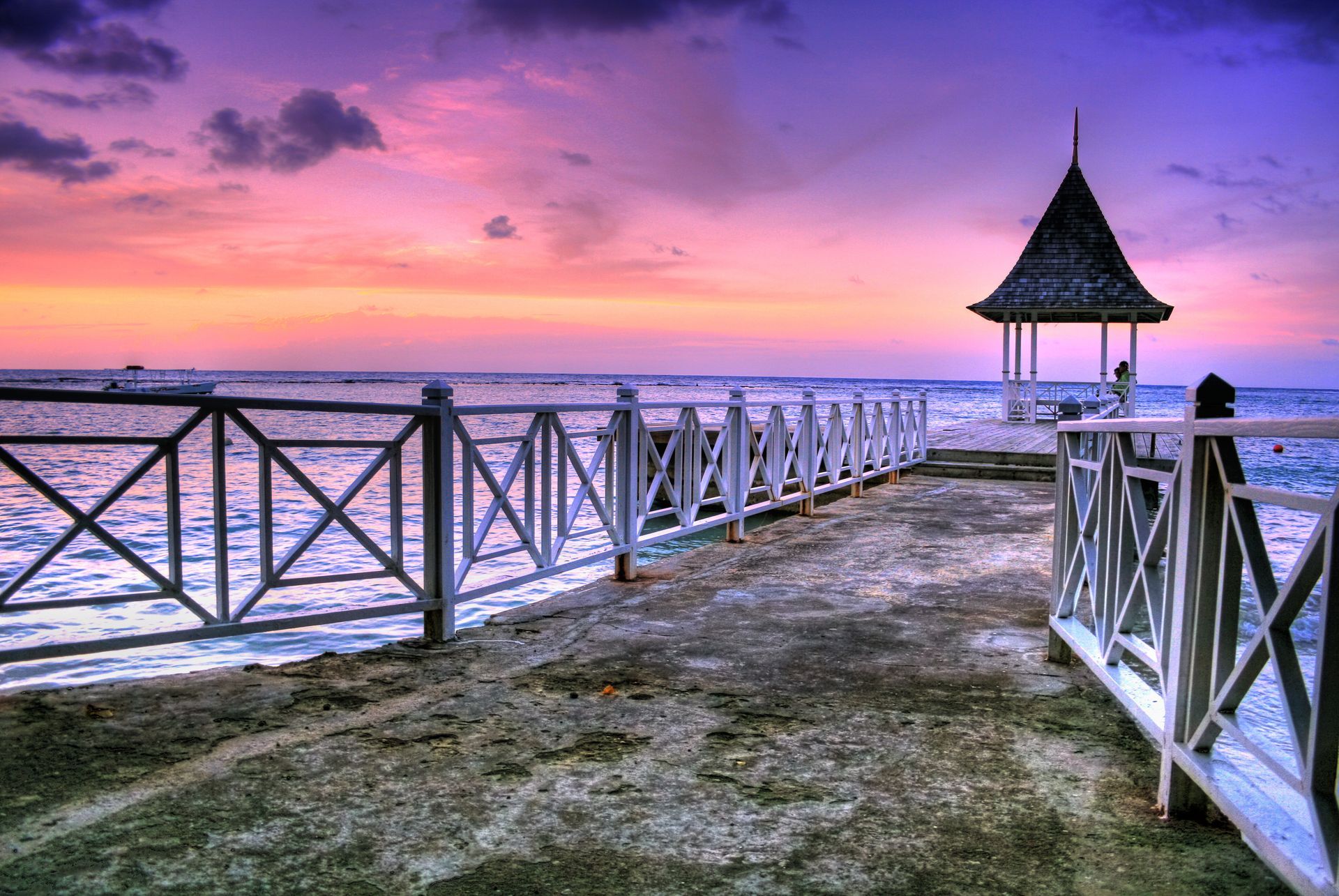
A First-Hand Look at Luxurious Beachfront Accommodations at Sandals Ochi Rios I magine waking up to the gentle sound of waves lapping against the shore and stepping out onto your private balcony to take in breathtaking ocean views—welcome to Sandals Ochi Rios, a premier Jamaica all-inclusive resort. This luxurious tropical getaway offers more than just stunning beachfront accommodations; it’s an invitation to indulge in exquisite dining in Jamaica, explore vibrant entertainment options, and experience a romantic retreat or family-friendly adventure like no other. As you wander through the lush gardens and pristine beaches, you'll discover that every moment at Sandals Ochi Rios is designed to create lifelong memories. Whether you're a seasoned traveler or dreaming of your first escape to paradise, this resort promises an unforgettable Sandals experience, infused with the rich culture and welcoming spirit of Jamaica. Luxurious Beachfront Accommodations: Embarking on a tropical journey means finding the perfect place to stay, and Sandals Ochi Rios doesn't disappoint. With its luxurious beachfront accommodations, the resort promises unmatched comfort and elegance. From stunning room features to ocean views and personalized services, every aspect is tailored to provide an exceptional guest experience. Stunning Room Highlights: At Sandals Ochi Rios, each room is a sanctuary of luxury. Rooms are thoughtfully designed to combine modern amenities with tropical charm. Every detail, from the decor to the spacious layout, creates an inviting atmosphere. Guests can choose from a variety of accommodations. Each offers its unique flair. The resort's website showcases these options, giving potential visitors a glimpse into their dream vacation. A stay here means being enveloped in comfort. Guests enjoy plush bedding, elegant furnishings, and state-of-the-art technology. These features ensure a relaxing stay. Ocean Views and Private Balconies: Imagine sipping coffee on a private balcony, with the ocean as your backdrop. At Sandals Ochi Rios, this vision becomes reality. Each room offers stunning ocean views, enhancing the luxury experience. Private balconies provide the perfect spot to unwind. Whether it's morning serenity or evening sunsets, guests can enjoy breathtaking scenes without leaving their room. This intimate connection with nature enhances the getaway. It allows guests to absorb the beauty of Jamaica, making every moment memorable. Personalized Guest Services: The essence of luxury is in the details, and Sandals Ochi Rios excels in personalized service. Every guest receives attentive care tailored to their needs, ensuring a comfortable stay. Concierge services cater to special requests. Room service delivers meals and amenities with precision. Housekeeping maintains a pristine environment. Personalized experiences set this resort apart, making it a standout choice for discerning travelers. Exquisite Dining Experiences: Dining at Sandals Ochi Rios is more than just a meal; it's a journey through flavors. With diverse culinary options, romantic settings, and authentic Jamaican tastes, guests can enjoy a gastronomic adventure that delights the senses. Diverse Culinary Options Guests at Sandals Ochi Rios can savor a variety of cuisines. Dining options range from casual beachside cafes to elegant fine dining. Italian and French restaurants offer a taste of Europe. Asian fusion and seafood provide exotic flavors. Grills and buffets cater to varied preferences. This diversity ensures every meal is a celebration of taste, satisfying every palate. Romantic Dining Settings: For those seeking romance, the resort offers idyllic dining settings. Picture an intimate dinner under the stars with the ocean breeze as your companion—Sandals Ochi Rios delivers this dream. Beachfront dinners create unforgettable memories. Private cabanas offer secluded dining. Gourmet menus enhance the romantic experience. These settings make it perfect for anniversaries or special occasions, enriching the romantic retreat in Jamaica. Authentic Jamaican Flavors Dining here wouldn't be complete without authentic Jamaican flavors. The resort brings local tastes to life with traditional dishes and spices. Jerk chicken and curried goat are must-tries. Fresh seafood reflects Jamaica's coastal bounty. Local spices add a unique twist. Experiencing these flavors offers insights into Jamaica's rich culinary heritage, adding depth to the visit. Entertainment and Activities: Beyond its luxury accommodations and dining, Sandals Ochi Rios offers a wealth of entertainment options. Whether it's the vibrant nightlife, relaxing spa treatments, or adventure-filled excursions, there's something for everyone to enjoy. Vibrant Nightlife Options As the sun sets, Sandals Ochi Rios transforms into a lively hub of entertainment. Nightlife options are diverse, offering a blend of relaxation and excitement. Live music sets the mood. Beach parties provide a festive atmosphere. Themed nights add variety to the experience. The vibrant nightlife ensures memorable evenings, perfect for socializing or unwinding. Relaxing Spa Treatments: Indulging in spa treatments is a hallmark of relaxation at Sandals Ochi Rios. The resort's spa offers a tranquil escape, designed to rejuvenate the mind and body. Massages and facials promote relaxation. Aromatherapy enhances the experience. Wellness programs cater to holistic health. These offerings allow guests to unwind and recharge, complementing the luxurious tropical getaway. Adventure-Filled Excursions: For thrill-seekers, the resort provides adventure-filled excursions. Excursions showcase Jamaica's natural beauty and cultural richness. Snorkeling and diving explore marine life. Hiking tours reveal stunning landscapes. Cultural visits offer insights into local traditions. These adventures enhance the Sandals experience, providing memories that last a lifetime.
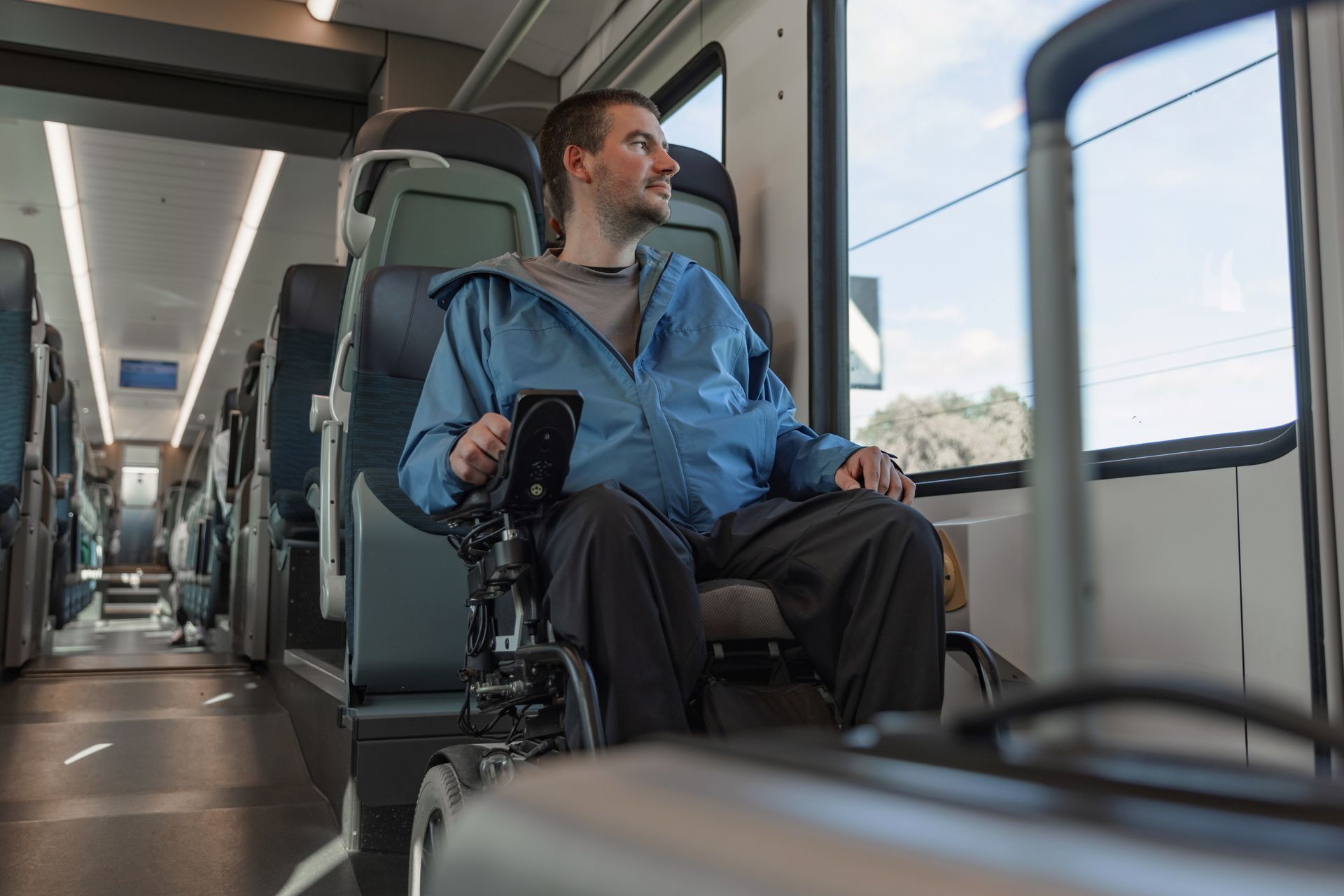
lEmbarking on summer solo travel is both exciting and rewarding, particularly for those eager to explore Europe independently. This section offers insights into how to prepare for your journey while ensuring comfort and accessibility. With thoughtful planning, you can embrace the freedom and adventure of solo travel. Preparing for Your Journey: Preparing for a solo travel adventure involves research and planning tailored to your unique needs. At Allstop Travel we are experienced with the challenges that handicaps present. Let us help you in exploring the world in new ways you might never have thought possible. If you decide to "Go it" Truley SOLO I hope this blog helps you have the trip you have always dreamed. Start by exploring tips for travelers with disabilities. Gather information about destinations, accessibility, and potential challenges. A well-researched itinerary ensures a smoother experience. Next, consult resources like Reddit's solo travel community for firsthand accounts. Reading about others' experiences provides valuable insights and often overlooked details. Engaging with these communities can also offer personal support. Finally, ensure you have all necessary documentation, such as medical records and personal identification. Having these readily available aids in emergencies or unexpected situations. It's also wise to inform someone back home of your travel plans and contact information. Packing Essentials for Comfort: Packing for comfort is key to ensuring a pleasant journey. Prioritize items that enhance comfort and accessibility. Start with lightweight, adaptable clothing suitable for various climates and activities. Next, consider mobility aids and accessories that facilitate easier travel. Items like portable ramps or foldable canes can be invaluable. Able Amsterdam's tips offer practical advice on selecting travel-friendly aids. Additionally, pack essential medications and a first-aid kit, tailored to your specific needs. Ensure you have enough supplies for the entire trip, plus a little extra for unforeseen delays. This preparation provides peace of mind and reduces stress. Planning Accessible Travel Routes: Planning accessible travel routes involves understanding transportation options and their accessibility. Start by researching public transport systems and services. Websites like Quora offer advice on navigating Europe's diverse transport networks. When planning routes, identify stations and stops with accessibility features. This includes elevators, ramps, and designated seating areas. Also, consider alternative transport methods like accessible taxis or ride-sharing services. Lastly, create a flexible itinerary that accommodates changes or unforeseen obstacles. Allow additional time for travel, ensuring a relaxed pace. Flexibility enhances your experience and reduces stress during your journey. Exploring Accessible Travel Europe: Europe offers a wealth of disability-friendly destinations, making it an ideal choice for solo travelers. This section explores top destinations, public transport navigation, and finding suitable accommodations. Embrace Europe's accessible travel options to enhance your adventure. Top Disability-Friendly Destinations: Exploring disability-friendly destinations enriches your travel experience. Europe boasts numerous welcoming cities, each offering unique attractions and amenities. Start with cities like Amsterdam, Barcelona, and Berlin , known for their accessibility features. Amsterdam, renowned for its inclusive infrastructure, offers attractions like the Van Gogh Museum with accessible facilities. Similarly, Barcelona's public transport and pedestrian zones cater to all travelers. Berlin , with its rich history, also provides ample accessible options. Consider visiting lesser-known destinations like Ljubljana, Slovenia, or Malmö, Sweden . These cities prioritize accessibility and offer a quieter, more relaxed atmosphere. Exploring diverse locations adds depth to your adventure. Navigating Public Transport: Navigating public transport is crucial for accessible travel in Europe. Begin by understanding the local systems, including bus, tram, and train networks. Each city offers unique services, so familiarize yourself with their specific features. Utilize resources such as Rick Steves' travel tips for insights on accessible transport. These tips provide practical advice on ticketing, boarding, and navigating stations. Incorporate travel apps and tools to aid in real-time navigation. Apps like Google Maps offer accessibility options, including step-free routes and detailed transit information. Leveraging technology enhances your travel efficiency and experience. Finding Handicap Accessible Europe Accommodations: Finding suitable accommodations is essential for a comfortable stay. Begin by researching hotels and rentals that prioritize accessibility. Look for features like step-free entrances, accessible bathrooms, and mobility-friendly layouts. Consult online resources like Able Amsterdam which provide recommendations and reviews. These insights help identify accommodations that meet your specific needs. Lastly, contact potential accommodations directly to confirm accessibility features. Discuss any additional requirements you may have. Direct communication ensures your stay is enjoyable and stress-free. Making the Most of Solo Travel Experiences: Solo travel offers unparalleled opportunities for personal growth and discovery. This section highlights ways to connect with local communities, savor cultural experiences, and join guided tours. Maximize your solo travel experiences with these tips. Connecting with Local Communities: Connecting with local communities enriches your travel experience. Engaging with residents offers authentic insights into the culture and lifestyle. Start by participating in community events or local gatherings. Volunteering or joining interest-based groups provides meaningful interactions. These experiences foster genuine connections and enhance your understanding of the local culture. Utilize social media and travel forums to arrange meet-ups or activities with locals. Platforms like Meetup or Couchsurfing facilitate connections based on shared interests. Engaging with locals adds depth to your journey. Savoring Cultural Experiences Safely: Savoring cultural experiences safely involves understanding local customs and practices. Begin by researching cultural norms, including dress codes and etiquette. Respecting local traditions enhances your interactions and experiences. Participate in accessible cultural events such as festivals, concerts, or exhibitions. Ensure these venues offer necessary accommodations for your needs. Finally, prioritize safety by staying informed about local conditions and advisories. Maintain awareness of your surroundings and practice common-sense precautions. Safe exploration ensures a fulfilling and enjoyable cultural experience. Joining Guided Tours and Activities: Joining guided tours and activities offers structured exploration with added benefits. Choose tours designed for accessibility, ensuring a comfortable experience. These tours often provide expert guides knowledgeable about local history and culture. Explore options like audio-guided tours or virtual experiences. These alternatives offer flexibility and accessibility, allowing you to engage with attractions at your own pace. Tours and activities offer: Structured itinerary and schedule, reducing planning stress. Expert insights and historical context enhancing your experience. Opportunities to meet fellow travelers, fostering community and connection. Guided tours and activities enrich your solo travel experience by offering convenience, insight, and camaraderie.
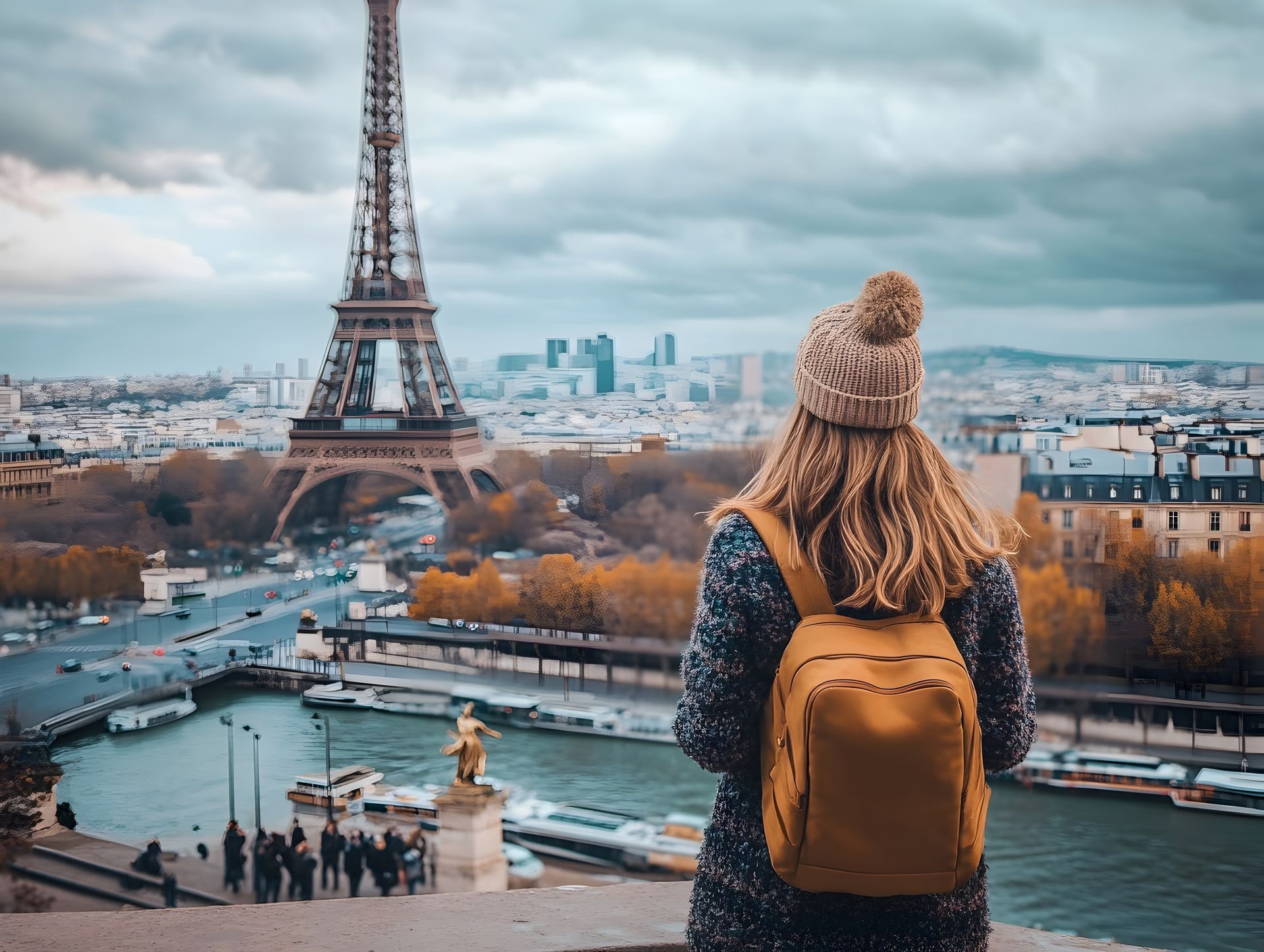
I have to put a note in this first about why I chose this picture. It was chosen because so many people dream of going to Paris. I am here to say call us, let us help you plan the Dream Solo trip of the BEST summer you have ever had. Plan, Pack and jump off the cliff headfirst into the rest of your life! When it comes to inexpensive summer vacations, Europe has a plethora of options. From discovering hidden gems to enjoying historic streets, each destination offers a unique experience for the solo traveler. Let's explore some of the best places for an affordable summer adventure. Exploring Portugal’s Hidden Gems: Portugal , with its captivating landscapes, is a haven for solo travelers. Lisbon, the vibrant capital, offers stunning viewpoints and charming neighborhoods. You can explore Alfama, one of the oldest districts, where narrow streets and Fado music fill the air. For a serene escape, head to the Douro Valley. Known for its terraced vineyards, it's a picturesque spot for a day trip. Sample local wines while soaking in the breathtaking views. The coastal town of Lagos is perfect for sun-seekers. Its stunning beaches and crystal-clear waters are perfect for relaxation. Whether you're lounging on the sand or exploring sea caves by kayak, Lagos offers a slice of paradise. Discovering Prague’s Historic Streets: Prague, with its stunning architecture and rich history, is one of the best places for solo travel. The Old Town Square is a bustling hub where you can admire the Astronomical Clock and vibrant street performances. Charles Bridge is another must-visit. Spanning the Vltava River, it offers breathtaking views of the city. Stroll across at sunrise for a peaceful start to your day. Venture into the Jewish Quarter, where history and culture intertwine. Explore synagogues and the Old Jewish Cemetery for a poignant glimpse into the past. Affordable accommodations are abundant. Stay in a cozy hostel or a guesthouse to save money and meet fellow travelers. For more insights, check out The Solo Travel in Style Blog. Best Places for Solo Travel: For solo travelers, Europe presents a myriad of destinations that cater to all preferences. Whether you're drawn to bustling markets or serene beaches, there's something for everyone to enjoy. Vibrant Markets of Eastern Europe: Eastern Europe's markets are a feast for the senses. In Budapest, the Great Market Hall offers a vibrant atmosphere where you can sample Hungarian delicacies and shop for local crafts. In Krakow, the Sukiennice (Cloth Hall) is a historic market filled with handmade goods. It's an excellent spot to pick up unique souvenirs and experience Polish culture. Bucharest's markets , like Piata Obor, offer a glimpse into daily life. Here, you can try traditional Romanian foods and mingle with locals. For more tips on exploring Europe alone, visit Be My Travel Muse. Sun-Kissed Beaches Without the Crowd: Seeking sun-soaked beaches away from the hustle? Head to the lesser-known gems of Europe. Albania's Riviera boasts pristine beaches and a laid-back vibe. Explore hidden coves and enjoy fresh seafood at local tavernas. Montenegro's Bay of Kotor offers stunning fjord-like scenery. Swim in the azure waters or hike nearby trails for panoramic views. In Croatia , discover secluded spots along the Dalmatian Coast. Islands like Vis and Mljet offer tranquility and natural beauty. For advice on solo travel destinations, check out TripAdvisor's Solo Travel Forum. Affordable Solo Destinations with Local Cuisine: A key part of any travel experience is indulging in local flavors. Europe offers diverse culinary delights that won't strain your wallet. Let's explore some top destinations to savor authentic tastes. Indulging in Spain’s Culinary Delights Spain is a paradise for foodies. In Barcelona, indulge in tapas at bustling markets like La Boqueria. Sample a variety of small dishes and local wines. Seville is known for its traditional Andalusian cuisine. Try gazpacho, a refreshing cold soup, and tapas in lively bars. For a unique experience, visit San Sebastian. The city is renowned for its pintxos, which are small, flavorful snacks. Explore the old town and hop from bar to bar to taste these culinary delights. For more guidance, explore Travel Insighter's recommendations. Sampling Italy’s Authentic Flavors on a Budget: Italy is synonymous with delicious food. In Rome, enjoy classic pasta dishes at local trattorias. Try a hearty carbonara or a simple cacio e pepe. Florence offers mouthwatering gelato and ribollita , a traditional Tuscan soup. Wander through local markets to sample fresh produce and cheeses. Head to Naples for the birthplace of pizza . A classic Margherita pizza is a must-try, and it's often affordable and incredibly satisfying. To make the most of your culinary journey, remember these points: Prioritize local eateries over tourist spots. Opt for lunch specials to save money. Explore open-air markets for fresh and inexpensive meals.


